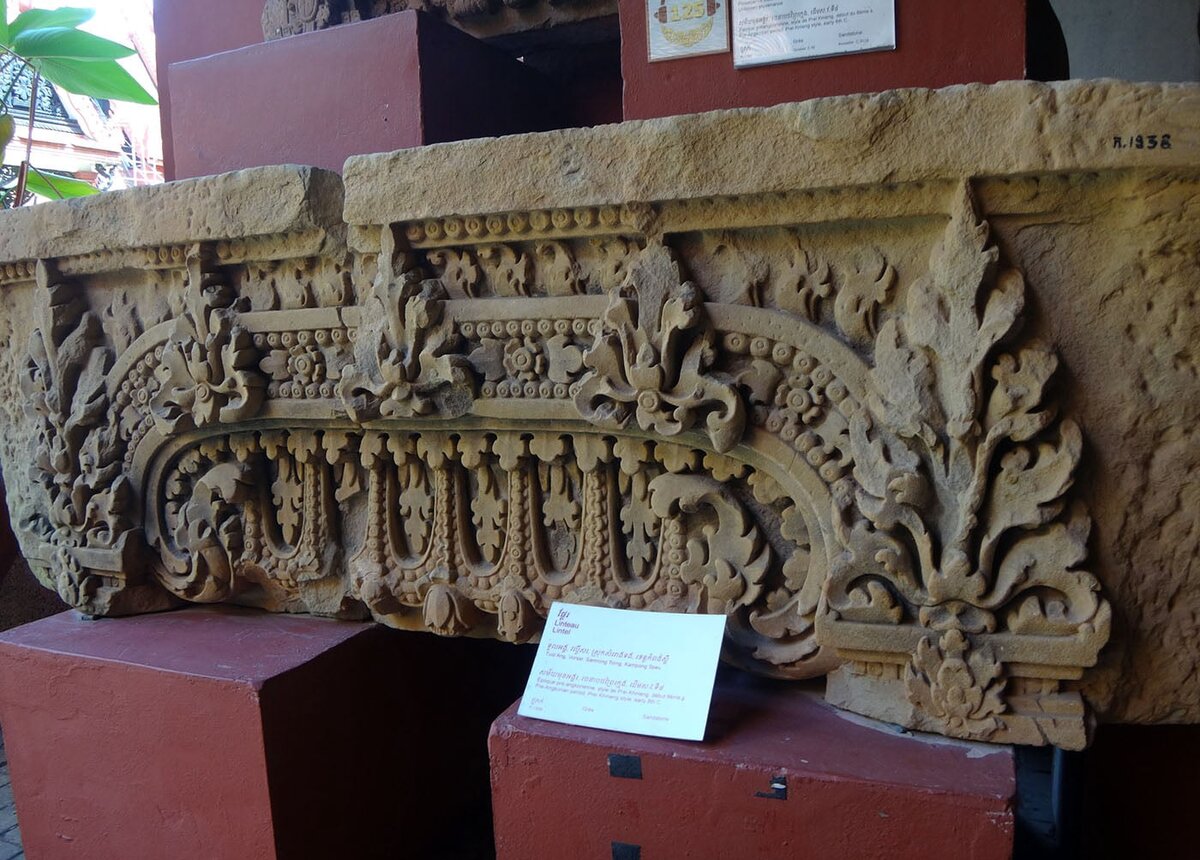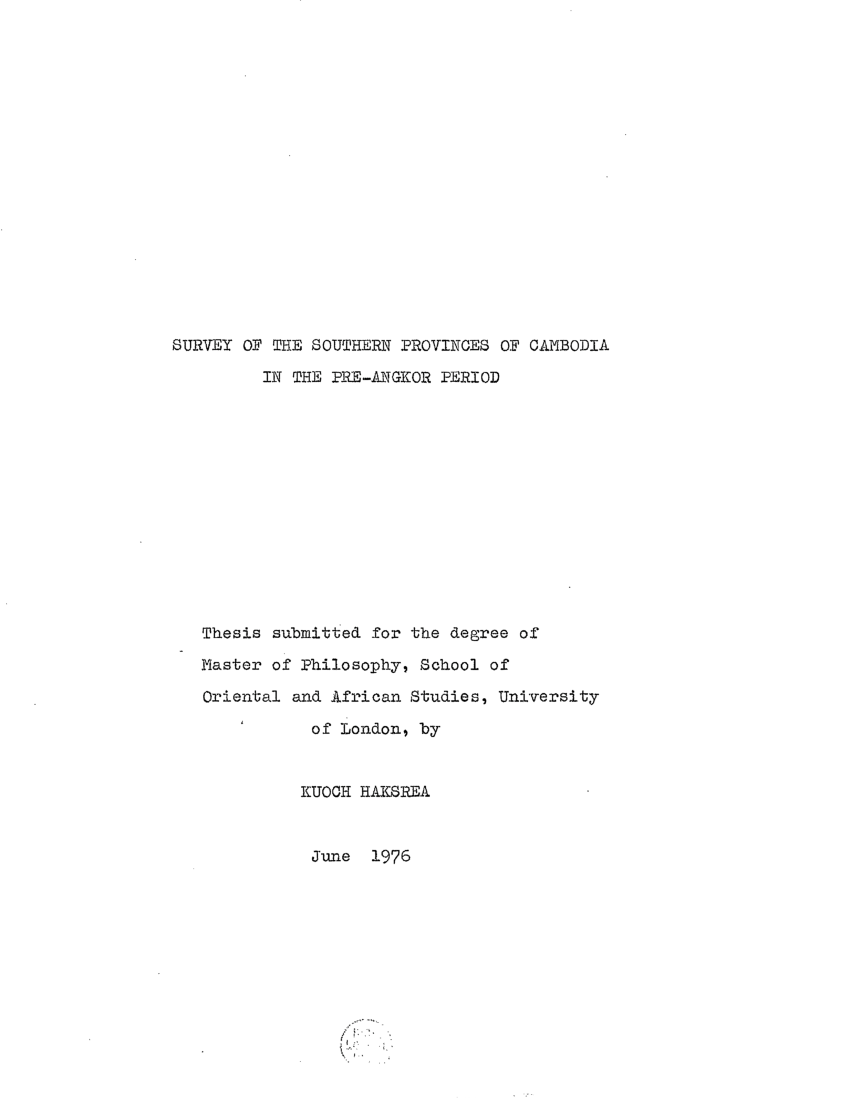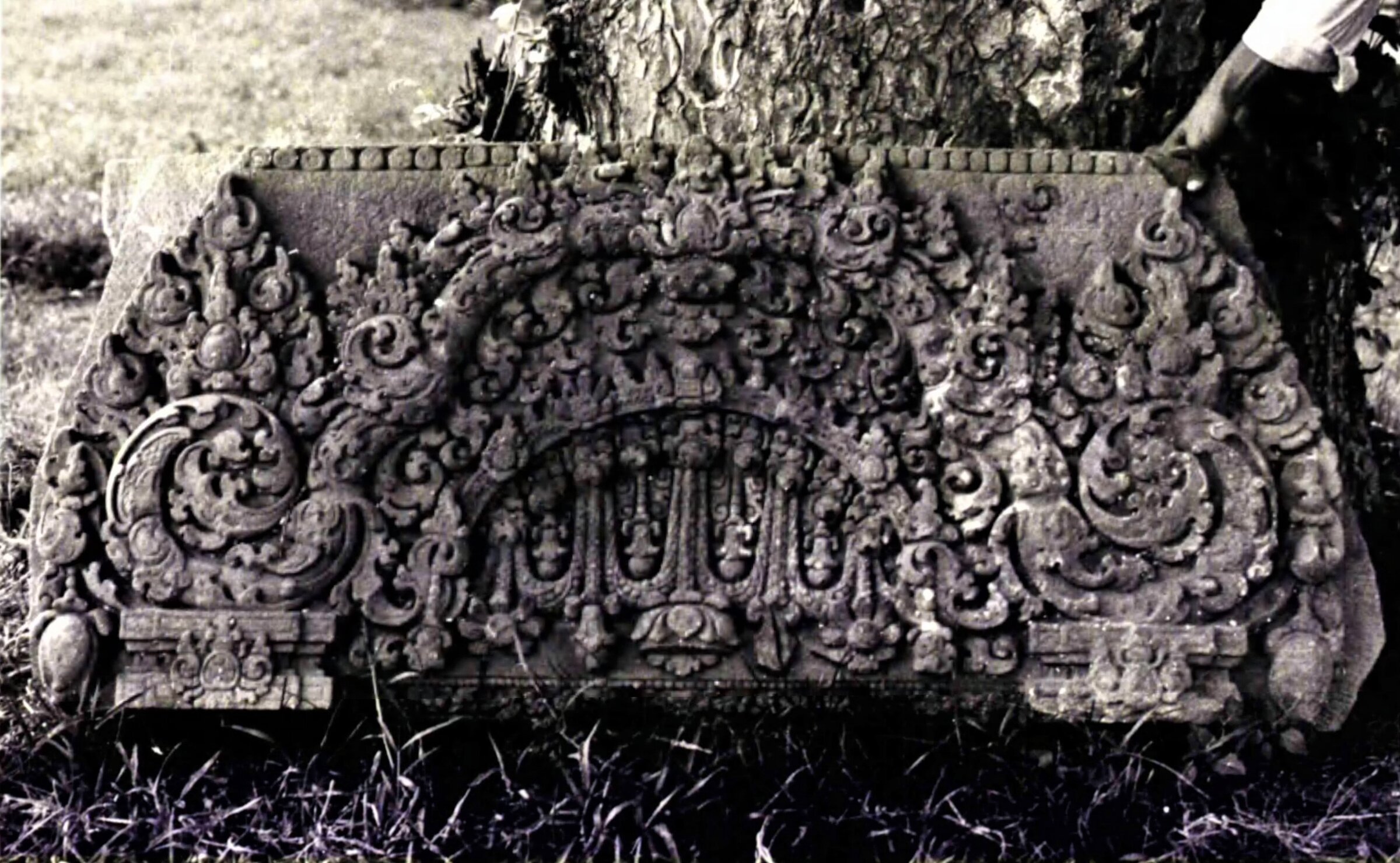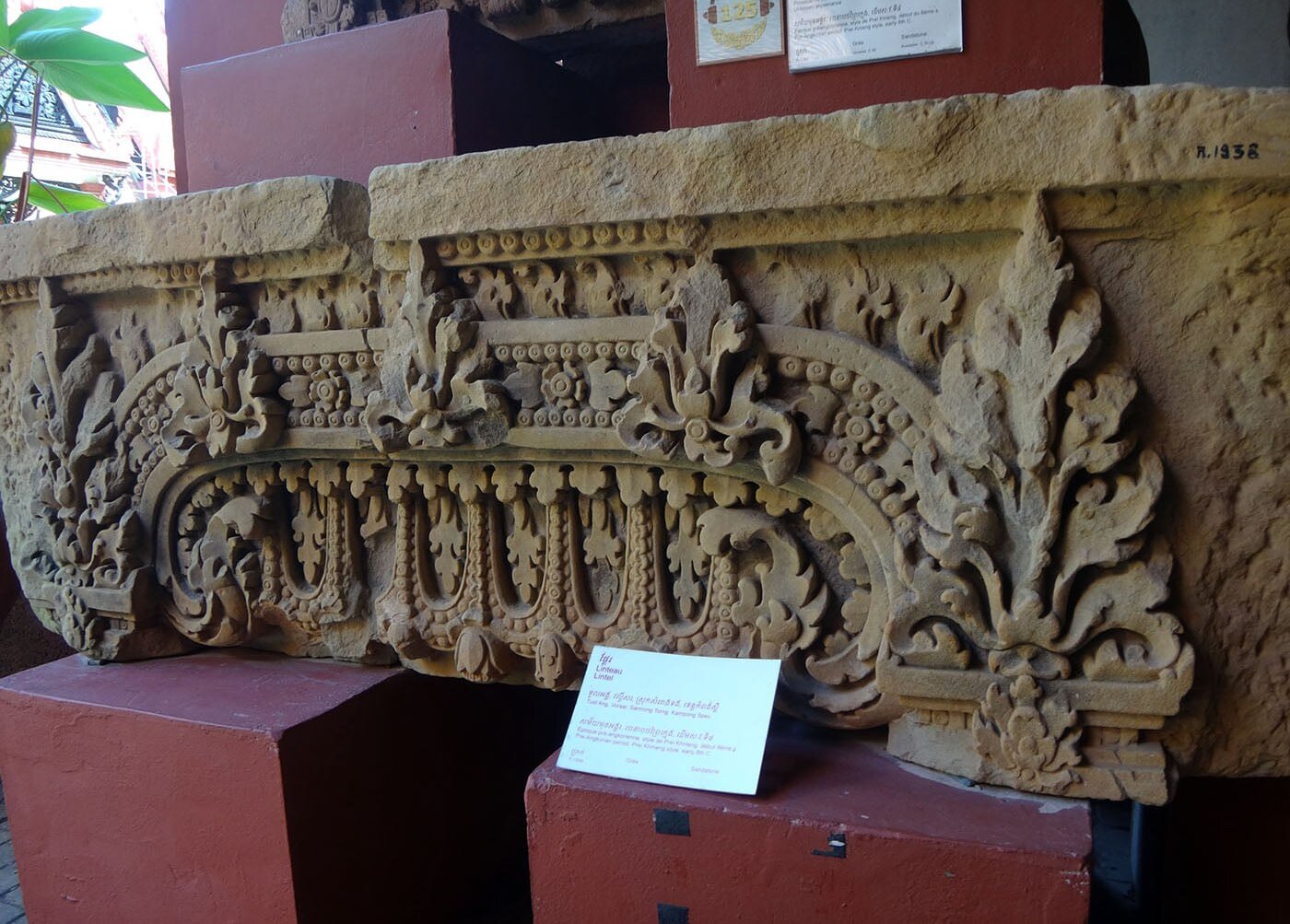Survey of the Southern Provinces of Cambodia in the Pre-Angkor Era
by Haksrea Kuoch
South of Phnom Penh, archaelogical research have contributed to a better understanding of the Funan and Chenla periods.

Publication: Master of Philosophy, SOAS, University of London | via Proquest
Published: 1976
Author: Haksrea Kuoch
Pages: 126
Language : English
pdf 9.5 MB
This excellent summary of archeological and historic studies related to the pre-Angkor era compares Henri Parmentier’s early work on “Khmer primitive art” with later finds, especially by archaeologist Robert Dalet, and with academic research on the Indianized states of South East Asia.
After a thorough analyzis of archaeological finds (lintels, inscriptions, mounds, statuary), the author gives us the historic background of a period that marked profound changes in the political and social balance of power in ancient Cambodia:
‘After Rudravarman, Funan went through a period of internal troubles. Although embassies from Funan were still recorded in the Hew History of the T’ang in the first half of the 7th century A.D., there were indications that a great change had taken place in the country. Chenla, a former northern vassal of Funan, under a prince named Bhavavarman and his cousin Chitrasena, attacked Funan in the second half of the 6th century.
‘Bhavavarman’s capital, Bhavapura, must have been located on the northern shore of Tonle Sap, in the vicinity of Ampil Rolum, a site north-east of the province of Kampong Thom. His cousin and successor Chitrasena, who took the coronation name of Mahendravarman at the time of his accession around 600 A.D, left a number of inscriptions in the Dangrek mountain area, suggesting that he still continued his predecessor’s policy which was one of expansion towards the south. But it was not until the reign of his son, Isanavarman, that the ancient territory of Funan was totally brought under the control of Chenla.
‘The authority of Isanavarman became well established as is confirmed by his numerous inscriptions found in the provinces of Kampong Cham, Prei Veng, Kandal and Takeo in present southern Cambodia, and also by the New History of the T’ang which attributed to him the conquest of Funan at the beginning of the period 627 – 649 A.D (..) The capital city of this new powerful kingdom was Isanapura which has generally been identified with one of the groups of ruins at Sambor Prei Kuk, in the north of the province of Kampong Thom.
‘After isanavarman came another ruler by the name of Bhavavarman II, who was succeeded by his son Jayavarman I (…) Following Jayavarman’s death, Chenla underwent a period of internal rebellion which, resulted in the break up of the kingdom shortly after 706 A.D. into Land Chenla, a land of mountains and valleys in the north, and Water Chenla, the southern half bounded by the sea and covered with lakes. Of the two, only Land Chenla, or Upper Chenla, appears to have had some degree of unity with a centralized power, attested by an embassy to China in 717 A.D. and an expedition in 722 A.D. to help a native chief in his revolt against China.
‘During the second half of the 8th century, Chinese chronicles recorded embassies from Land Chenla till as late as 799 A.D. As for Water Chenla, or Lower Chenla, it seems that the country was divided into several principalities, at least five, one of which was Aninditapura under the rule of a certain Baladitya who must have somehow been related to the ancient kings of Funan. At least part of Water Chenla appears to have become more or less tributary to Java during the latter decades of the 8th century A.D.’
Photos: Two lintels recovered by Robert Dalet in or aroind tuol (mounds), in Wat Prei Puoch Area, Kompong Speu district.
Tags: archaeology, Sambor Prei Kuk style, Indianization, Chenla, Funan, Khmer art
About the Author
Haksrea Kuoch
Kuoch Haksrea studied philosophy and archaelogy at SOAS (University of London), obtaining a MBA in 1976 with his thesis on the Southern Provinces of Cambodia in the Pre-Angkor era.
In 1986, he co-authored with Orientaliste Judith Jacob a complete translation of the Reamker (Ramakerti), the Khmer version of the Ramayana.



